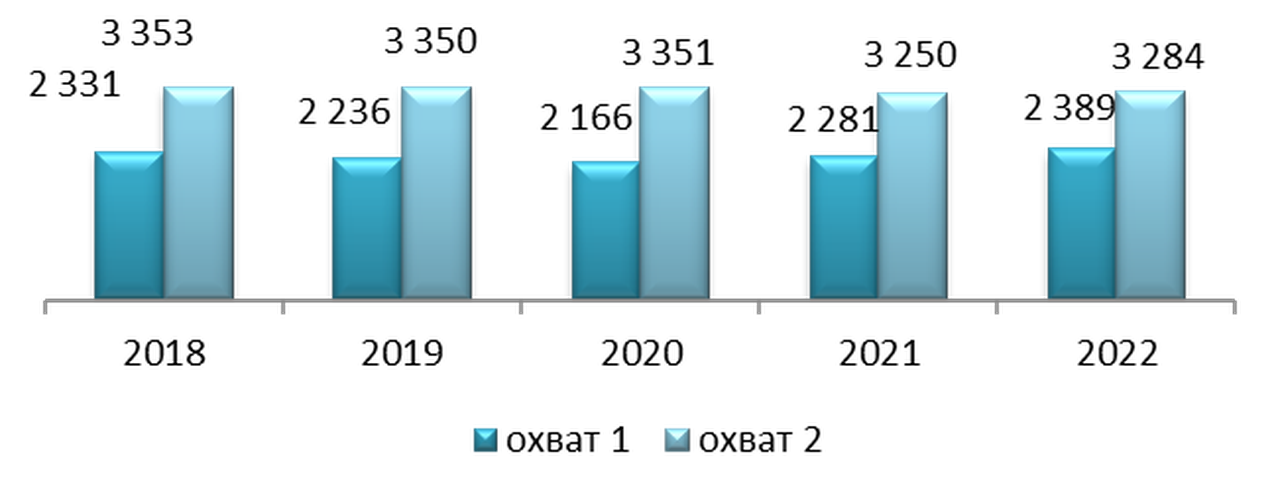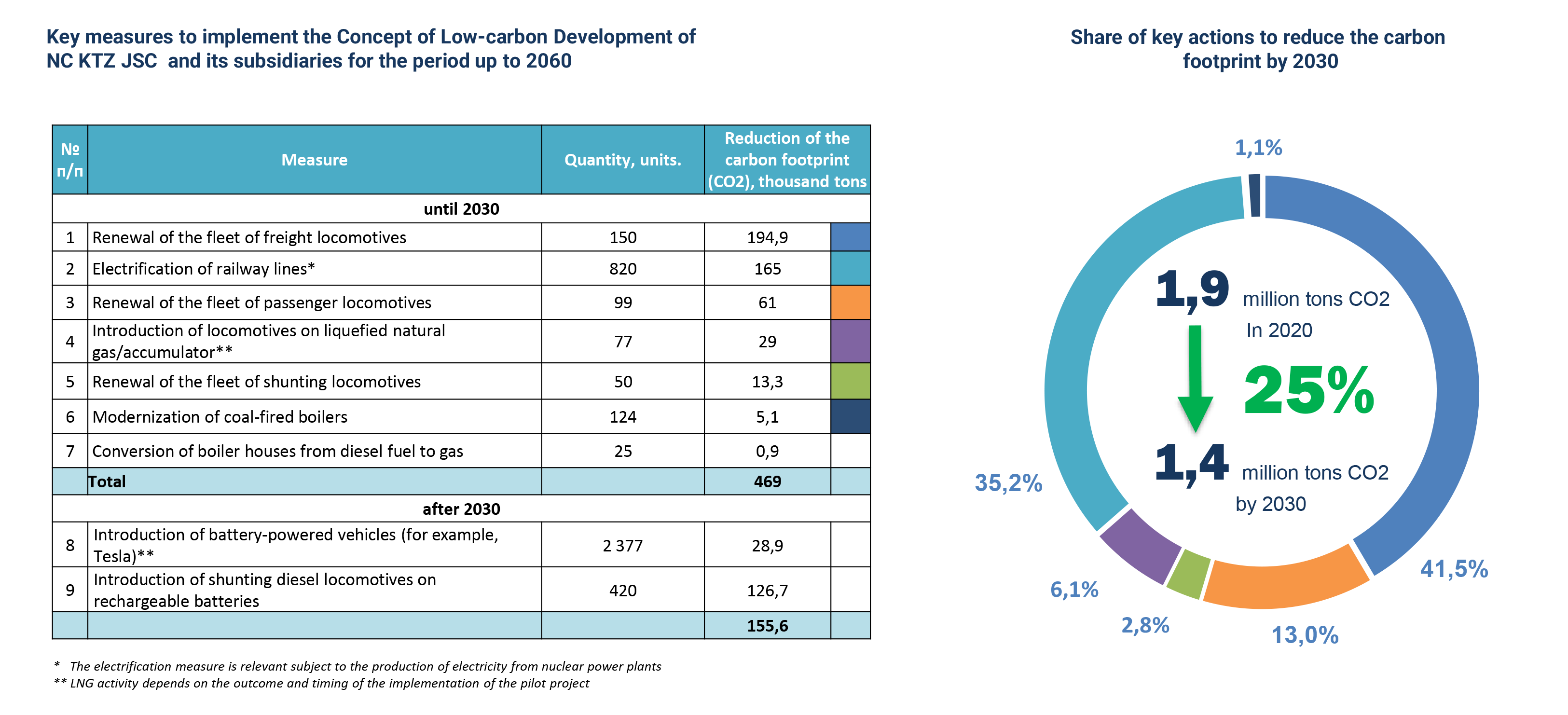Reducing carbon footprint
Reducing greenhouse gas emissions
Achieving carbon neutrality within the framework of implementing the requirements of the Paris Agreement is now an urgent issue in the world. To date, the Paris Agreement has become a turning point in international climate policy. The Republic of Kazakhstan was the first among the CIS countries to ratify this agreement on December 6, 2016 and consistently demonstrates its commitment to the development of a decarbonized economy.
In December 2020, Kazakhstan announced a new goal of achieving carbon neutrality by 2060, confirming its obligations under the Paris Agreement on preventing global temperature growth by more than 1.5–2 °C.
In order to support the initiative of the Head of State K. Tokayev on Kazakhstan achieving carbon neutrality by 2060, the Company is working to reduce its carbon footprint.
In 2022, the Management Board of the Company adopted the Concept of low-carbon development of NC KTZ JSC until 2060.
Approved by the decision of the Management Board of NC KTZ JSC dated December 26, 2022 (Minutes No. 02/49).
The concept of low-carbon development of NC KTZ JSC until 2060
Currently, NC KTZ JSC has developed a Concept of low-carbon development of NC KTZ JSC for the period up to 2060.
The goal of the Concept is to achieve carbon neutrality by the Company.
The priority objectives of the Concept are:
• defining the Company's goals and objectives to reduce its carbon footprint by 2060;
• determining the directions of technological development to achieve the goals of carbon neutrality;
• assessment of the need for investments and financial resources;
• assessment of key risks and consequences in case of non-fulfillment of the planned energy transfer goals.
The Company's carbon footprint includes direct and indirect emissions:
Dynamics of greenhouse gas emissions in the period from 2018-2022 (coverage area 1, 2), thousand tons of CO2-eq.

Direct emissions of greenhouse gases are carried out during the operation of mobile sources (locomotives, railcars, cars) and stationary consumers (boilers, boiler houses, furnaces).
In 2022, the total greenhouse gas emissions amounted to 5,672.9 thousand tons, including direct emissions - 2,388.6 thousand tons, indirect - 3,284.3 thousand tons. Compared to 2021, the volume of emissions increased by 2.5%, while the growth of direct greenhouse gas emissions amounted to 4.7%, indirect energy emissions - by 1% and is associated with an increase in electricity consumption for traction needs. The reason for the increase in energy consumption is explained by an increase in the volume of freight and passenger transportation by 4.9%.
Indirect emissions from fuel combustion at third-party energy sources purchased by the Company since 2013 have not changed significantly.
Rail transport is one of the most environmentally friendly modes of transport due to its efficient use of resources, lower emissions of harmful gases and low noise and vibration helps to improve air quality and reduce environmental impact.
Electric locomotives using electric power are more environmentally friendly than diesel-powered locomotives. This is because they use energy more efficiently and do not produce harmful emissions.
Electric locomotives account for over 32% of the total number of locomotives, the data is presented in the table below.
Percentage of electric train fleet compared to the entire rolling stock fleet of your company
|
Year
|
Total number of locomotives
|
Electric locomotives
|
Percent
|
|
2019
|
1702
|
549
|
32,3%
|
|
2020
|
1713,5
|
548,5
|
32,01%
|
|
2021
|
1678
|
516,5
|
30,8%
|
|
2022
|
1571
|
513
|
32,7%
|
|
2023
|
1623
|
527
|
32,5%
|
According to the Decree of the Government of the Republic of Kazakhstan dated December 31, 2021 No. 996 "On approval of classification (taxonomy) of green projects to be financed through green bonds and green loans", the portion of rail transportation using electric traction is considered to be green projects. The majority of the company's revenues, capital expenditures and operating expenses are attributable to non-thermal traction activities. The percentages are approximately 86%, 73% and 89%, respectively.
Greenhouse gas emission targets within the framework of the Low-carbon Development Concept of NC KTZ JSC until 2060
As part of the implementation of the Concept's activities, it is planned to reduce direct emissions from 1.8 million tons of CO2 to 1.3 million tons, or by 25% of the 2020 level, until 2030. At the same time, in the absence of implementation of energy transfer measures, it increases by 16% due to an increase in diesel fuel consumption in train traction.
Dynamics of the carbon footprint (direct CO2 emissions), million tons

